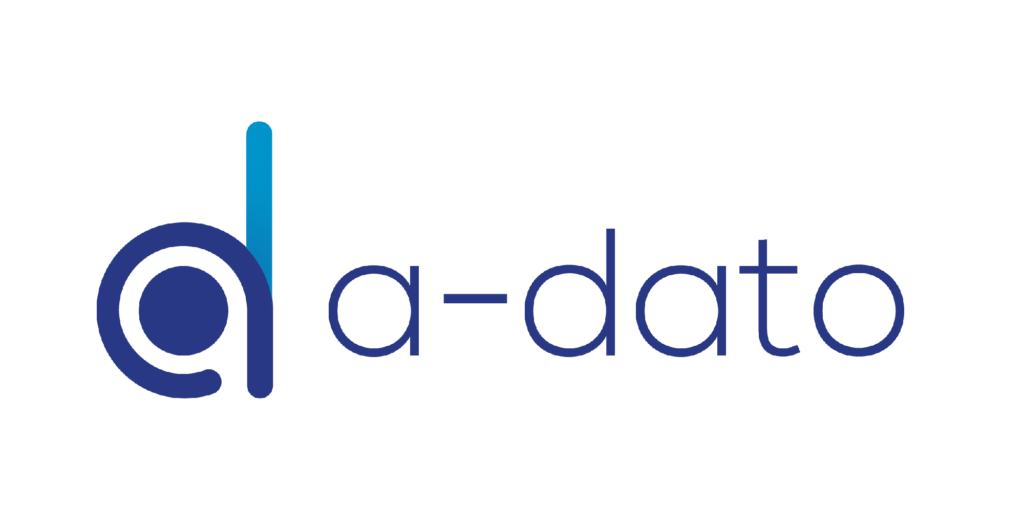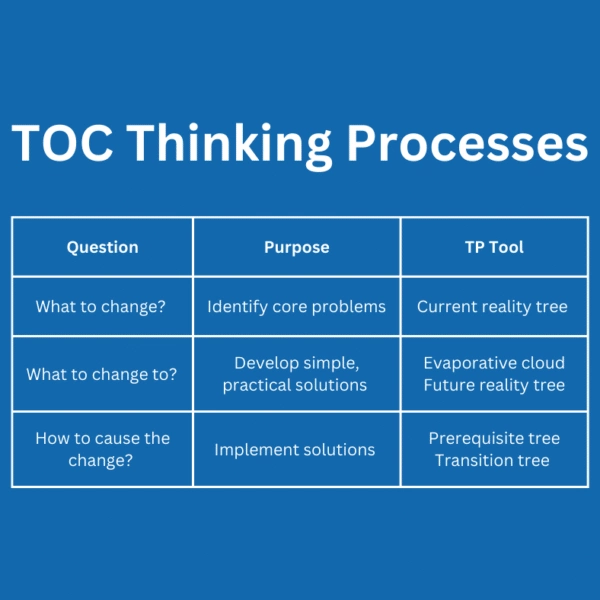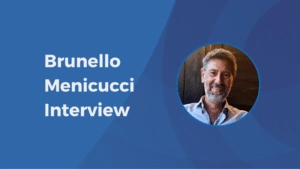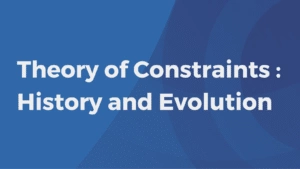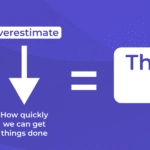TOC Thinking Processes (TP) form a critical component of the Theory of Constraints (TOC) methodology, aiding in problem-solving, decision-making, and systematic analysis.
The TP tools, similar to the “5 focusing steps,” focus on identifying factors obstructing a system from reaching its objectives. These tools include logic diagrams such as the current reality tree (CRT), evaporating cloud (EC), future reality tree (FRT), prerequisite tree (PRT), and transition tree (TT). Additionally, they help pinpoint problematic symptoms, analyze their root causes, propose corrective actions, and plan their implementation. Further, TP tools combine logical reasoning with intuition and knowledge from those familiar with the problem, enabling efficient and effective problem-solving.
In this comprehensive article, we’ll delve into this powerful tool that reshapes how organizations approach complex challenges and drive efficiency.
Understanding the Theory of Constraints (TOC)
Before we dive into the intricacies of the TOC Thinking Process, let’s establish a foundational understanding of TOC itself. At its core, TOC is a management philosophy developed by Dr. Eliyahu M. Goldratt. Essentially, it revolves around the idea that within any complex system, there exists a single constraint that limits the system’s overall performance. Therefore, identifying and addressing this constraint is the key to achieving efficiency and success.
The Five Components of TOC Thinking Processes
The TOC Thinking Process comprises five distinct components, each with a specific purpose and methodology. Let’s explore these components in detail.
Current Reality Tree (CRT)
The Current Reality Tree (CRT) is the starting point. Essentially, it’s a tool used to uncover the root causes of problems in the current state of a system by depicting cause-and-effect relationships. Hence, it begins with a list of Undesirable Effects (UDEs) and connects them to probable causes.
Evaporating Cloud
An evaporating cloud is a tool for resolving conflicts within a system. It identifies opposing wants, underlying needs, and common objectives. Subsequently, assumptions are surfaced and conflicts are resolved to find solutions that satisfy both sides without compromise.
Future Reality Tree (FRT)
Once the constraints are identified with CRT, the FRT comes into play. Basically, it envisions the desired future state and outlines the necessary changes to overcome constraints. Consequently, FRT serves as a roadmap for achieving organizational goals.
Prerequisite Tree (PRT)
Subsequently, PRT is used to plan and prioritize actions required to achieve the desired outcomes outlined in the FRT. Hence, it helps in breaking down complex objectives into actionable steps, ensuring a systematic approach to constraint resolution.
Transition Tree (TT)
A transition tree outlines potential actions and their consequences to aid in strategic planning. By mapping out various paths and outcomes, organizations can make informed decisions and optimize their processes for better results.
Understanding the Three Key Decisions
At the core of the TOC Thinking Process are three fundamental decisions that guide the problem-solving journey:
What to Change?
The first step involves pinpointing the core problems within a system. Consequently, TP provides the Current Reality Tree (CRT), a cause-and-effect diagram that unravels the web of interconnected issues. Starting with a list of Undesirable Effects (UDEs), decision-makers connect these to their probable causes, using a top-down approach. This process helps to visualize and understand complex systems and identify the root causes of problems.
What to Change To?
Once the core problems are identified, the next question arises: What to change to? To find plausible solutions, TP offers tools like the Evaporating Cloud (EC) and the Future Reality Tree (FRT). Basically, the EC helps resolve conflicts by identifying opposing wants, underlying needs, and common objectives, all while avoiding the need for compromise. On the other hand, FRT serves as a strategic planning tool, ensuring that proposed changes will have the desired effects without creating new issues.
How to Cause the Change?
With a clear understanding of the core problems and potential solutions, the final step is to determine how to cause the change effectively. Hence, the Prerequisite Tree (PRT) and Transition Tree (TT) come into play here. The PRT identifies obstacles to implementing the chosen solutions and outlines the steps needed to overcome them. Meanwhile, the TT provides a detailed action plan, specifying step-by-step processes and the rationale behind each action.
TOC Thinking Processes Example
Imagine a manufacturing company facing consistent delays in its production line due to machinery breakdowns and inefficient resource allocation. Firstly, using the TOC Thinking Process, the company identifies the root causes of these constraints through CRT.
Subsequently, the FRT is constructed, envisioning a future state where machinery operates optimally, and resources are allocated efficiently. With the insights gained, the company implements a strategic plan outlined in the S&T Tree, focusing on proactive maintenance, resource optimization, and staff training.
Finally, the manufacturing process becomes more streamlined, with reduced downtime and higher throughput. The PRT ensures that each step is executed systematically, ultimately eliminating the constraints and boosting profitability.
Conclusion
In conclusion, the TOC Thinking Process serves as a powerful framework for organizations to tackle complex challenges and optimize their operations. Further, organizations can eliminate bottlenecks and enhance their operational efficiency by systematically analyzing current constraints, envisioning future states, and outlining action plans. Such tools empower teams to think critically, communicate clearly, and execute strategies with precision, ultimately driving success and achieving their goals.
Are you ready to unlock the potential of the TOC in your organization? Access valuable insights and transform your approach to problem-solving. Get started now!
FAQs
- What is the Theory of Constraints (TOC)?
The Theory of Constraints (TOC) is a management philosophy developed by Dr. Eliyahu M. Goldratt. It focuses on identifying and addressing the single constraint that limits a system’s overall performance to achieve efficiency and success.
- How does the TOC Thinking Processes work?
The TOC Thinking Process comprises five components, including the Current Reality Tree, Future Reality Tree, Negative Branch Reservation, Positive Branch Reservation, Strategy and Tactics Tree, and Prerequisite Tree. These tools help organizations systematically analyze constraints and plan for their elimination.
- Can the TOC Thinking Processes be applied to various industries?
Yes, the TOC Thinking Process is a versatile methodology applicable to a wide range of industries, including manufacturing, healthcare, logistics, and more. Its principles are adaptable to address constraints in diverse contexts.
- Are TOC Thinking Processes suitable for small businesses?
Absolutely. TOC can benefit organizations of all sizes. Its structured approach to problem-solving and decision-making is valuable for small businesses seeking efficiency and growth.
- How can I get started with implementing TOC Thinking Processes in my organization?
To get started, consider training your team in TOC methodologies. You can also seek the guidance of TOC experts or consultants who specialize in its implementation.
References
- The Theory of Constraints Thinking Process Approach to Developing Growth Strategies in Supply Chain By Shams Rahman
- Goldratt’s “Theory of Constraints” Thinking Processes: A Systems Methodology linking Soft with Hard – Victoria Mabin
- The theory of constraints thinking processes: retrospect and prospect – Seonmin Kim
